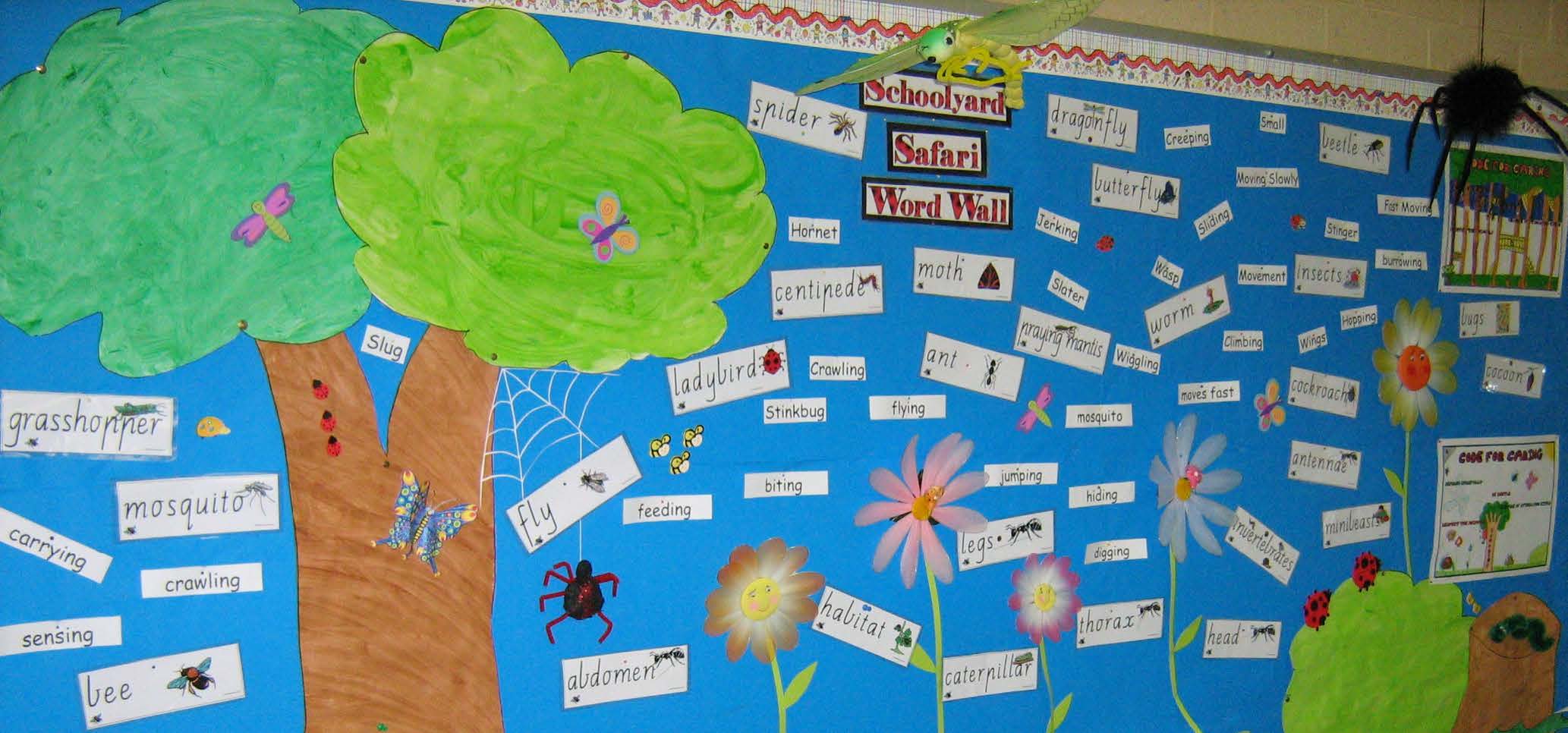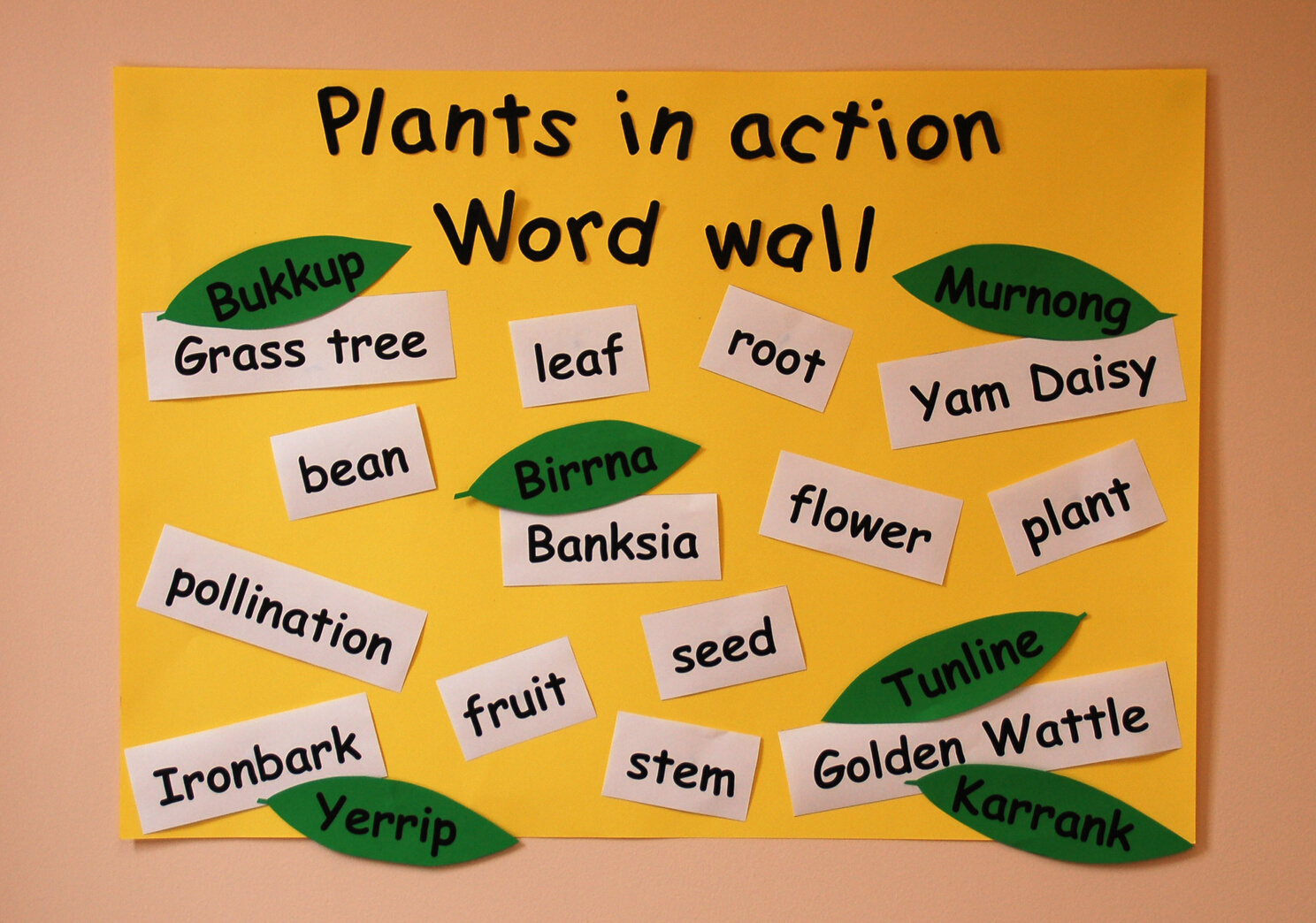A word wall is an organised collection of words and images displayed in the classroom. It supports the development of vocabulary related to a particular topic and provides a reference for students. The content of the word wall can be words that students see, hear and use in their reading, writing, speaking, listening and viewing. Creating a class word wall, including words from different dialects and languages, aligns to descriptions in the Australian Curriculum: English.

Purpose
The purpose is for students to be exposed to a print-rich environment that supports their ;science and literacy experiences.
A word wall can be used to:
- support science and literacy experiences of reading, viewing, writing and speaking
- provide support for students during literacy activities across all key learning areas
- promote independence in students as they develop their literacy skills
- provide a visual representation to help students see patterns in words and decode them
- develop a growing bank of words that students can spell, read and/or use in writing tasks
- provide ongoing support for the various levels of academic ability in the class
- teach the strategy of using word sources as a real-life strategy.
Organisation
Position the word wall so that students have easy access to the words. They need to be able to see, remove and return word cards to the wall. A classroom could have one main word wall and two or three smaller ones, each with a different focus, for example, high frequency words.
Choose robust material for the word cards. Write or type words on cardboard and perhaps laminate them. Consider covering the wall with felt-type material and backing each word card with a self-adhesive dot to make it easy for students to remove and replace word cards.
Word walls do not need to be confined to a wall. Use a portable wall, display screen, shower curtain or window curtain. Also, consider creating word cards in shapes that align with the themes or sub- concepts within the unit.
Organise the words on the wall in a particular way; alphabetically, or in word groups or groups suggested by the unit topic, for example, words for a life cycles unit might be organised under headings, such as ‘Plant life cycle’ and ‘Animal life cycle’, words for a geology unit might be organised under headings such as ‘landscapes’, ‘soil’, ‘rock cycle’
Invite students to contribute words from different languages to the word wall. Group words about the same thing, for example, different names of the same piece of clothing on the word wall so that students can make the connections. Identify the different languages used, for example, by using different-coloured cards or pens to record the words.
Implementation
- Limit the number of words to those needed to support the science and literacy experiences in the classroom.
- Add words gradually, and include images where possible, such as drawings, diagrams, photographs, or artefacts. Increase the number of words on the word wall as students are introduced to the scientific vocabulary of the unit.
- Consider putting a date on words to track the class’ use of the term at a particular point of science inquiry.
- Encourage students to interact with the word wall. Practise using the words with students by reading them and playing word games. Refer to the words during science and literacy experiences and direct students to the wall when they need a word for writing. Encourage students to use the word wall to spell words correctly.
Use the word wall with the whole class, small groups and individual students during literacy experiences. Organise multi-level activities to cater for the individual needs of students.

